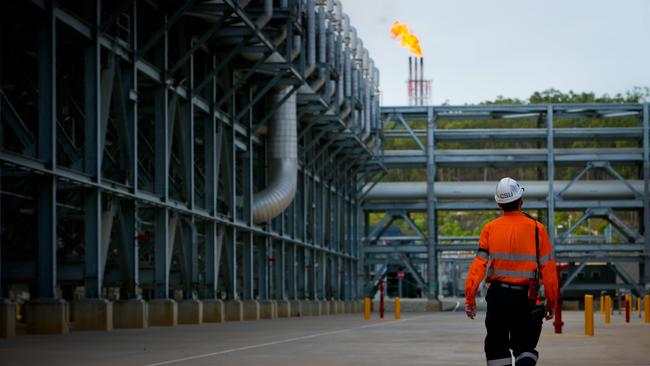Gas shortfall fears as Newcastle LNG import plant axed
A major LNG import facility for NSW has been dumped in a move that worsens fears over gas shortages on the east coast.

Gas users face the risk of supply shortages after a major LNG import terminal in NSW has been axed and a second facility in Victoria faces a year-long delay, adding to fears over energy rationing along the east coast.
The Newcastle gas terminal – which had been backed by the NSW government and was slated to supply up to 80 per cent of the state’s gas needs – has been shelved, with its South Korean backers claiming volatile international gas markets made the facility “economically unfeasible”.
Viva Energy is also battling a year-long plus delay in developing its Geelong import plant, with the Victorian government yet to make a decision on granting planning permission, exacerbating forecasts showing the state faces a shortage of gas for two years.
Officials have warned households in NSW, Victoria, the ACT and Tasmania could be forced to cut their gas use this winter due to an ongoing squeeze as production dries up from offshore fields and amid delays bringing on volumes from LNG import plants.
While Australia is among the world’s largest gas exporters, a lack of supplies left available for domestic use have forced the nation into the unusual position of having to also develop import plants to ensure enough gas can be sourced for local businesses.
The move to drop the Newcastle facility also increases pressure on the Perrottet government to deliver Santos’s long-stalled Narrabri gas project given NSW still relies on other states for 95 per cent of its gas needs. Snowy Hydro’s controversial Hunter gas plant may also need to be fast-tracked to ensure the state has enough gas to get through forecast crunch periods over the next few years amid a tight market.
The NSW government said there were other gas options still on the table that would supply big manufacturers in the state, including Narrabri and Andrew Forrest’s delayed import plant at Port Kembla.
“The decision not to proceed with the planning process for the proposed Newcastle LNG terminal is a matter for the proponent,” a NSW Department of Planning and Environment spokesman said.
“There are a number of gas projects being progressed by the private sector – including the expansion of existing pipeline capacity, the Narrabri gas project and the Port Kembla import terminal – that would supply additional gas to NSW.”
NSW declared the Newcastle plant critical state infrastructure in August 2019, as it scrambled to ensure it ha access to sufficient supplies ahead of the Liddell coal plant closure in April this year.
The Newcastle terminal was being developed by EPIK – a South Korean LNG project development company – but its owners informed the competition regulator, as part of its ongoing gas inquiry, that it had been discontinued.
“EPIK has declared its proposed Newcastle LNG import terminal ‘economically unfeasible’,” the Australian Competition & Consumer Commission said in a statement.
EPIK blamed the “volatility of the international LNG market and high LNG benchmark pricing” which had “placed a downward pressure on the economics of the project”, the ACCC said.
Australia’s east coast gas market has been crimped in the past few years due to Queensland LNG exports, onshore development restrictions, falling Bass Strait production, and the increasing cost of bringing new domestic supplies to market.
The regulator warned last week a shortage of gas on Australia’s east coast this year was still possible despite an improvement in the outlook for the market, but it remained cautious on the outlook for LNG imports.
EPIK was unavailable for comment on Thursday.
Viva Energy’s Geelong plant is now a year behind schedule, with the facility waiting for planning sign-off from the Victorian government.
“If a decision is made to proceed, supply could potentially commence prior to winter 2025, which is around 12 months later than previously expected,” the ACCC said.
Viva said it remained upbeat “about the need for the gas terminal to service the southern state gas demand – something highlighted by the ACCC report – and that the requirement is potentially expanding.”






To join the conversation, please log in. Don't have an account? Register
Join the conversation, you are commenting as Logout